Disclaimer
Zativo caters to private customers only, and does not supply commercial or industrial growers with large amounts of cannabis seeds. If we have reason to suspect that the ordered seeds are destined for growing cannabis on a larger-than-private scale, we reserve the right to dismiss that specific order.
SOG and ScrOG
Special Techniques SOG and ScrOG: A Closer Look
In the massive ecosystems of rain forests, the canopy of green at the very top soaks up nearly all of the light from the sun, cutting off the supply to any life below. This concept is the basis for growing cannabis using the sea of green (SOG) and screen of green (ScrOG) techniques.
When it comes to indoor growing, spacial constraints can place a heavy burden on a grow's success. Over time, methods have been developed to optimise yield, while staying within the parameters of limited grow room and lighting equipment. Both SOG and ScrOG are carried out in the hope of harvesting large yields in a confined environment. Sea Of Green and Screen Of Green maintain similarities and differences in setup, which may influence your decision to choose one over the other.
WHAT IS SOG: THE BASICS
The Sea of Green process was invented in Europe between the early to mid-1980’s. The technique involves cultivating many small cannabis plants (between 30-50) in close proximity over a short growing cycle. Ideally, this technique allows for overhead lighting to emit equal energy down on a canopy of short plants. This system focuses on directing light energy to one major cola on each plant. Though individual plants will have less flowers, the overall yield will be higher, since the setup is optimised for all energy to be pumped into one large bud site, rather than multiple small ones.
When employing the SOG technique, plants are put through a very short vegetative period that lasts about two weeks long, if not less. Instead, clones are pushed into flowering after only 4-6 weeks of growth, allowing for rapid turnover.
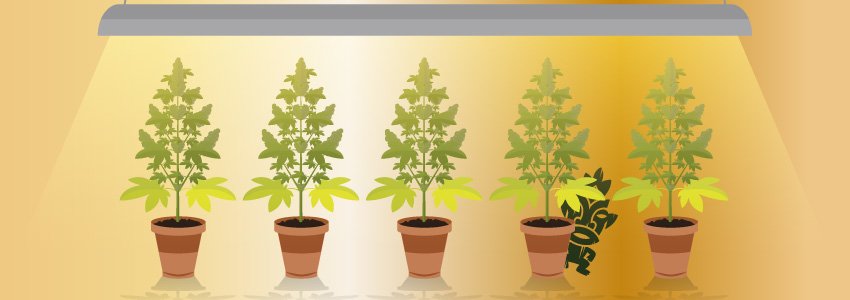
WHY USE SOG?
SOG is an ideal growing option for growers looking to repeat the cultivation cycle several times a year to increase per annum production. The SOG process cuts off several weeks of grow time from each crop’s life span, saving invaluable time and money for cultivators.
SOG is particularly suited to indica varieties, which naturally grow shorter and bushier than sativas. The sea of green method focuses on growing one major cola on each plant, which indicas naturally facilitate. Conversely, sativas grow lankier and sprout multiple buds sites, culminating in more colas. In the case of the sea of green technique, the goal is to grow plants of equal heights to give each cola the energy and attention it deserves. Plus, the final product ends up looking much more pristine and trim ready. Total harvest time for Sea of Green lasts between 2-3 months, allowing for 4-6 cultivation cycles per year!
THE KEY IS LIGHTING
Artificial lighting is both expensive and more difficult to set than simply growing outdoors. In order to get the biggest bang for your buck, it’s best not to waste time worrying about the lower, shadier sections of the plant that aren’t receiving light. Instead, SOG maximises surface area and light exposure, only focusing energy on the canopy. Other approaches use low-stress training (LST) which allows for the light to reach more remote areas. This is easier said than done in a small indoor grow room. Furthermore, these actions require more time spent maintaining your crop.
When plants just start out, they should receive an 18/6 hour light regimen during the vegetative stage, until they reach around 30cm. From here, plants are ready to be forced into the flowering stage. Switch to a 12/12 light regimen, as this will help to produce the ideal buds. Be cautious however since this lighting schedule can cause sativas and young plants to excessively stretch, undermining the whole point of the SOG process. Topping sativa plants before forcing them into flowering can help to limit further growth.
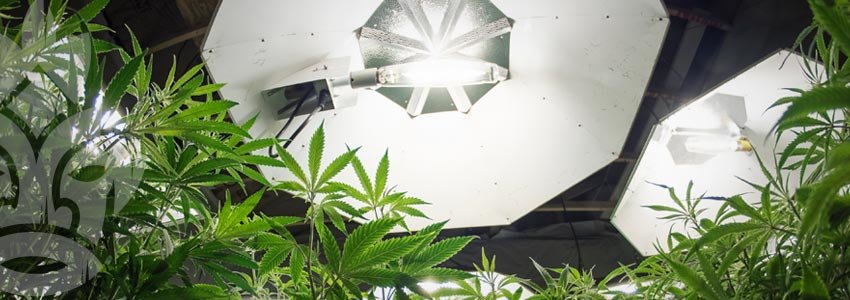
WHAT IS SCROG: THE BASICS
Different from sea of green is the screen of green method. Both these techniques make good use of limited space and lighting, but are carried out using a different protocol. Unlike SOG, ScrOG uses fewer plants with the hope of focusing light energy on many different flowering sites. This is performed by creating a mesh screen of identical squares that allows for an even canopy to form above. Using this method, the goal is to bring up the lower parts of the plant to the mesh canopy and optimise each arm’s budding potential.
ScrOG is a form of low-stress training and as such, requires manual intervention to be carried out correctly. By breaking down the primary cola into multiple sites and running branches along the mesh lengthwise, the flowering stage will be more effective in producing greater yields of high-quality bud.
WHY USE SCROG?
The screen of green procedure is one suited for small grow rooms with limited resources. Running an indoor grow operation of any size can be expensive - ScrOG allows you to get your money’s worth from your crop. Under this method, cultivators grow anywhere from 1-5 plants, an ideal number for many home growers. While this may not seem like a lot of plants to work with, low-stress training in combination with close-proximity lighting will pleasantly astound you when it comes time to harvest.
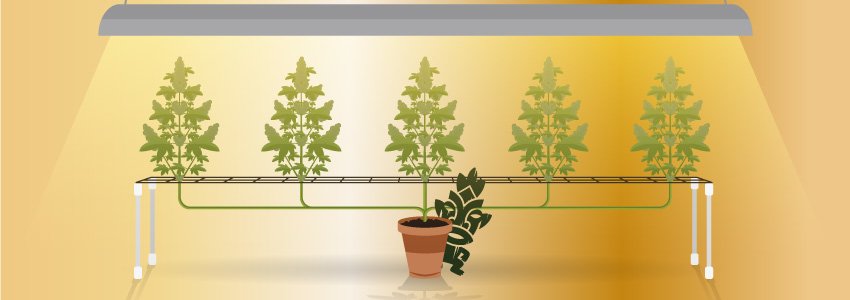
HOW TO PREPARE A SCROG
For a ScrOG set-up to be effective, the frame and mesh of the screen must be built using the right materials. There are a number of options you can use to create the screen itself, as well as some materials to avoid. String and twine both work well to give the bud sites some support, while chicken wire and fishing line are best avoided. This is because chicken wire encourages bud growth around the wire itself, making retrieval difficult. Fishing line, on the other hand, is just too sharp to support ScrOG growth.
Spatially, the mesh screen should be positioned around 20cm above plants so that they can grow significant sized buds without getting too close to the light source. As far as the holes on the grid themselves, these should be between 5-10cm - just enough room that each plant can help cover the entire canopy to form a visual screen of green.
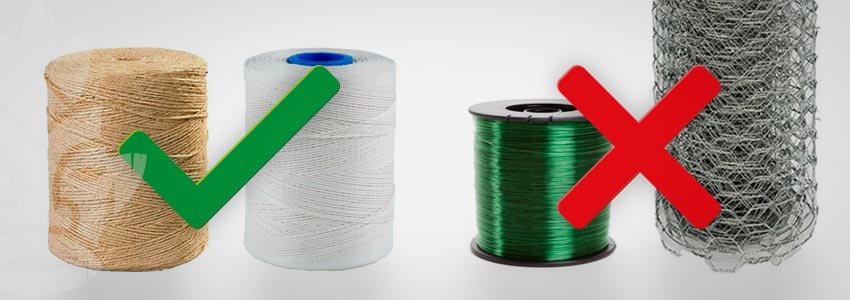
TOPPING
An essential step of ScrOG-ing is to top the main cola to create more bud sites. Topping allows for the main stalks to be woven into the mesh, focusing light attention on multiple arms. The idea is to achieve as even a canopy as possible, so each plant gets equal resources. Whereas the SOG technique goes for many uniform singular colas per plant, ScrOG attempts at numerous buds throughout each of the few plants. The more a plant is topped, the more bud sites and smaller buds it will produce. A 4-way topping process helps to create medium sized buds that can be spaced out evenly on the mesh screen.
During the vegetative stage especially, topping helps to maximise the energy of the lighting on the young plants. As plants grow, stems are weaved horizontally so the light can reach the branches lower to the base. By spreading out the arms during the vegetative stage, the plants will be easier to control once flowering begins and they are changed to a 12/12 light regimen.
Low-stress training should be carried out with caution so as to not overwhelm the crop physically. As branches continue to grow, allow them to reach heights of several centimetres before “tucking” the branch down to the next square of the screen. This helps to facilitate even growth and keep arms from breaking.

WHEN TO START FLOWERING
Knowing when to switch from vegetative growth to the flowering stage depends on the crop’s canopy coverage. Once the plants have filled up between 70-80% of the space, you can implement a 12/12 lighting schedule and push the flowering process. Sativas tend to continue stretching, so consider starting flowering for these strains a bit earlier than you would indicas.
In fact, even 50% canopy coverage for vigorous sativa strains is plenty to begin the process. You don’t want to find yourself in a ScrOG where the horizontal growth you have worked so hard to achieve gets thwarted by stretchy stems that increase the space between bud sites and the light. Once your ScrOG is in full flowering mode, remember to prune back fan leaves to allow the light to continue reaching as many flowers as possible.
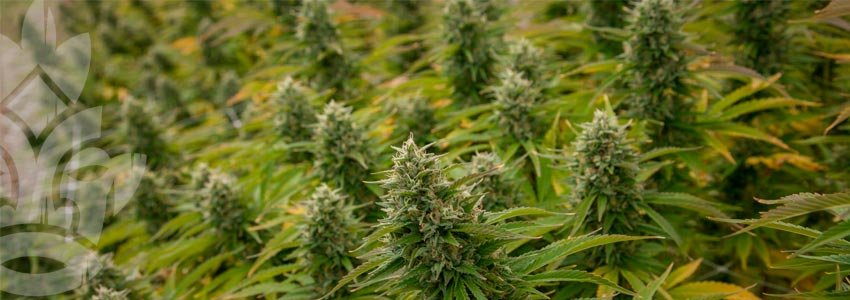
AIR CIRCULATION: SOG AND SCROG
The nature of SOG and ScrOG grows require incredibly close proximity between plants. While each method handles light and space restrictions well, the risk of plants growing mould and mildew due to high humidity and lack of airflow in between skyrockets. This issue can be avoided by implementing air-cooled lights. Additionally, it helps to have a few fans running in order to dispel excess hot air from the grow room, while bringing in cool, fresh air from outside. Many growers also prune some of the lower levels of leaves - as they receive very little light and can be cleared away to help airflow.
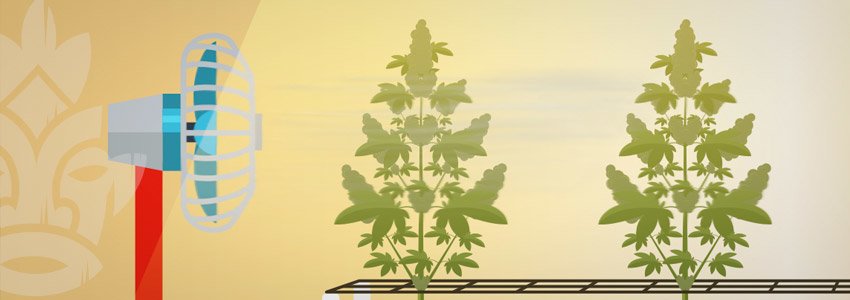
WHAT LIGHTING TO USE
Regardless of what size plants you are growing, High-Intensity Discharge (HID) lights only reach the first 92cm of the canopy. This is why SOG and ScrOG both became popular systems in the first place. In the case of the sea of green technique, the idea is to grow shorter plants with equally dispersed lighting.
A significant issue many indoor growers experience are reduced yields due to inadequate light. For SOG and ScrOG grows, reflectors produce a more honed in column of light. This will help to stimulate growth and increase bud size. Just make sure to leave enough room so your plants don’t experience light burn.

SOG AND SCROG PROS AND CONS
Just like any growing method, there are pros and cons to SOG and ScrOG that make each more suitable for different situations. The sea of green requires using clones or “cuttings” which are exact genetic copies of a mother plant. For those with limited access to plants, it may be difficult to acquire clones. Moreso, using the SOG method is best for indica varieties. While you can grow sativas with SOG, these strains require much more maintenance and display high rates of height variation.
Screen of green, on the other hand, is often looked at as one of the most suitable methods for small-scale home growers. Since this technique only uses a few plants and less intense lighting requirements, it is a great option for new growers and those looking to cultivate sativas. Also, ScrOG grows require you to make or acquire the screen itself! While many cultivators take joy in creating the frame and mesh, others may not have the time or skills to put one together themselves.
Perhaps the greatest pro of the SOG method is its sooner harvest time - there are some cons to the sea of green method, however. Concerning watering and air circulation, the dozens of plants in your small space will require more individual attention to make sure each is healthy and protected from intruders. A SOG grow that goes too long without being checked for mold and pests may result in a completely obliterated crop since all the plants are so close together.
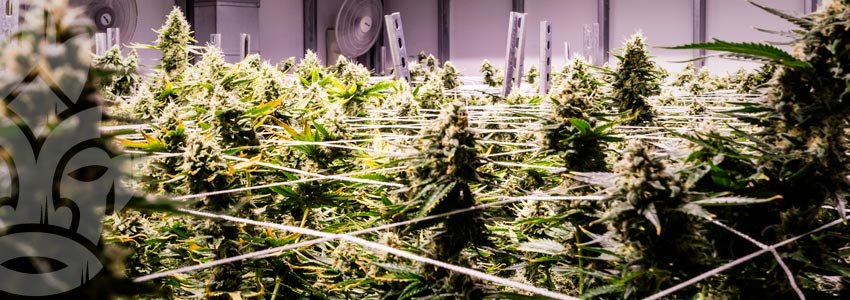
STRAINS TO USE FOR BOTH METHODS
One of the great aspects of SOG grows is that you can use multiple different strains in one operation. While the natural growth of clones from different strains could make for an uneven canopy, you can keep colas in line by topping stretchy plants. Some growers are partial to exclusively autoflowering strains for their SOG grows. This way, you can avoid worrying about negotiating disparate growth timelines. ScrOGs, on the other hand, represent a prime opportunity to grow sativas indoors.
LAST WORD
If there is one thing to take away from the SOG and ScrOG growing methods, it’s that small growing spaces don’t have to mean small yields! Both the “sea” and “screen” of green techniques exercise the positive potential of plant canopies - how intense, equally dispersed light energy will result in the formation of beautiful, cannabinoid-packed flowers. Regardless of which technique you choose, each presents a viable option for getting the most out of a home grow.




